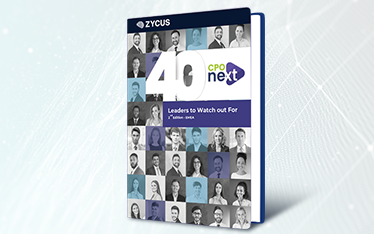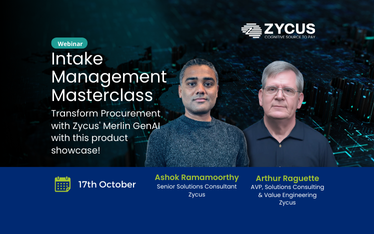Pandemics, climatic events, geopolitical tensions, and cyber hazards are just a few of the disruptions that supply chains today must deal with. And to borrow a phrase, a supply chain is as strong as its weakest link. This emphasizes the necessity of a rigorous supplier risk management process.
The typical risk management plans organizations have consist of regular annual checks. Regular annual checks, however, are insufficient. Risks necessitate constant monitoring using prediction models, and rapid action thereon. Instead of being done on a periodic basis, risk management must become continuous.
Organizations require a structured method to assess vulnerabilities, devise mitigation plans, and track impact, since supply disruptions cost organizations ~120 million dollars on average.
Executives ought to dedicate the same attention to supplier risk management as they do to financial or operational risks. Let’s look at the essential milestones in this process of developing resilience.
A systematic approach to identifying and rectifying risks
An effective risk management process involves:
- Pinpointing Critical Suppliers: Analyze spending and reliance to pinpoint suppliers with the highest potential for influence and implement strict control.
- Defining Risk Factors: Based on the likelihood and impact of the disruptions, decide which metrics, such as financial health, compliance, resilience, and cyber threats, should be monitored.
- Continuous Data Collection: For up-to-the-minute information on supplier performance according to predetermined variables, access digitized surveys and external databases.
- Risk Profiling: Utilize analytics to analyze supplier data and compare against benchmarks to develop risk profiles and identify priority issues.
- Interpreting Risks: Identify core causes and convert ratings into practical risk mitigation priorities by combining data insights with human intelligence.
- Developing Mitigation Strategies: Implement strategies like inventory buffers, dual sourcing, certification audits, and financial support that handle supplier risk mitigation based on risk characteristics.
Read here Enterprise Supplier Risk Management (SRM) – Comprehensive Guide
- Tracking Mitigation Execution: Utilize digitized collaboration to monitor compliance and make sure suppliers execute risk rectification measures.
- Regular Audits: Conduct routine process audits and evaluations to find new risks and gauge the success of current mitigations.
With rigor applied across these interconnected steps, supplier risk management process transforms from reactive firefighting to predictive resilience.
Read our blog on: Supplier Risk Management: Why It Matters More Than Ever in 2023
A proactive approach to insulate against disruptions
Risk management contributes to supply chain resilience by:
- Correlating Internal Data with External Inputs: Data on supplier performance from procurement systems should be combined with information on regional hazards, compliance violations, and credit scores. This links disparate data pools that were previously separated.
- Tracking Early Warning Signals: Through leading indicators like supply delays, staff attrition, and sentiment research, keep an eye on not just risk thresholds but also risk trajectories. It enables preventive action.
- Instituting Contingency Plans: Define playbooks outlining contingency sourcing, inventory, and logistics steps that can be activated for high-priority risks within short notice to enable continuity of supply.
- Building in Redundancies: Mitigate concentrated dependence through measures like strategic stockpiling, fungibility of resources between sites, and dual sourcing of essential components.
- Fostering Supplier Transparency: Ask your suppliers for updates on any anticipated disruptions and your plans for recovery in advance. Develop an environment of openness and trust.
- Continuously Stress Testing: Analytical models can be used to simulate various disruption scenarios and determine whether an organization is equipped to alter its strategies.
Resilience stems not just from robust suppliers but also from robust processes and culture focused on agility and redundancy to adapt to dynamic risks. Supplier risk management process elevates supply chain strength from reactive to predictive.
Harnessing technology in Supplier risk management process
Technology plays a pivotal role in scaling continuous supplier risk management through. Read full report by Forbes.
- Real-Time Visibility: Through dashboards, alerts, and workflow notifications, AI-based platforms offer 24/7 visibility into risk concerns in place of periodic reporting.
- Process Digitization: Questionnaires, document trails, and mobile-accessible mitigation trackers offer structure and guarantee uniform compliance across global teams.
- Centralized Data and Documents: A unified data lake and repository integrates, correlates, and structures data across procurement and external systems for a suitable source of truth.
- Workflow Automation: Executing supplier risk management processes with speed and consistency is improved by digitizing manual tasks including follow-ups, audits, and periodic reviews.
- Actionable Insights: Platforms produce detailed suggestions as opposed to general reports to direct mitigation using advanced analytics, machine learning, and scenario modeling.
Purpose-built technology provides the backbone for preventive data-driven risk management versus reactive approaches. It enables resilience at scale across global supply networks.
Mitigate risks proactively with Zycus’ Merlin for Risk Zycus’ Merlin for Risk
Zycus’ Merlin for Risk provides the intelligence and foundation for resilient supply chains through:
- 360-degree Risk Visibility: A complete picture for precise mitigation is provided by a comprehensive view of risks that encompass financials, operations, compliance, sustainability, and geopolitical variables.
- Always-On Risk Monitoring: In contrast to trailing periodic assessments, ongoing risk monitoring through regular data feeds, external databases, and news alerts offers prompt visibility.
- Predictive Risk Analytics: Merlin’s AI algorithms process thousands of data points to generate predictive risk ratings and zero in on emerging threats before they disrupt supply.
- Quantitative Rigor: For an in-depth knowledge of exposure, risk scoring employs a comprehensive framework spanning probability, criticality, substitutability, and other characteristics.
- Risk-based Mitigation Prioritization: Suppliers are divided based on risk profiles, enabling unique mitigation strategies matched to varied levels of susceptibility.
Teams can work with suppliers to develop targeted preventive measures as opposed to reactive ones using real-time, predictive knowledge of risks. Risk management develops into an organizational pillar.
Request a demo today and discover how Zycus’ Merlin for Risk impacts supply chain resilience! Check out our AI Sandbox – Merlin Experience Center and witness risk management excellence in action!
Related reads:
- A Comprehensive Guide to Supplier Risk Management
- Supplier Risk Management: Why It Matters More Than Ever in 2023
- Emerging Supplier Risk Management Trends and Technologies to Watch Out For
- 5 Supplier Risk Assessment Pitfalls to Avoid
- 7 Key Considerations to More Effective Supplier Risk Management
- Supplier Performance Evaluation – A Quick Checklist










